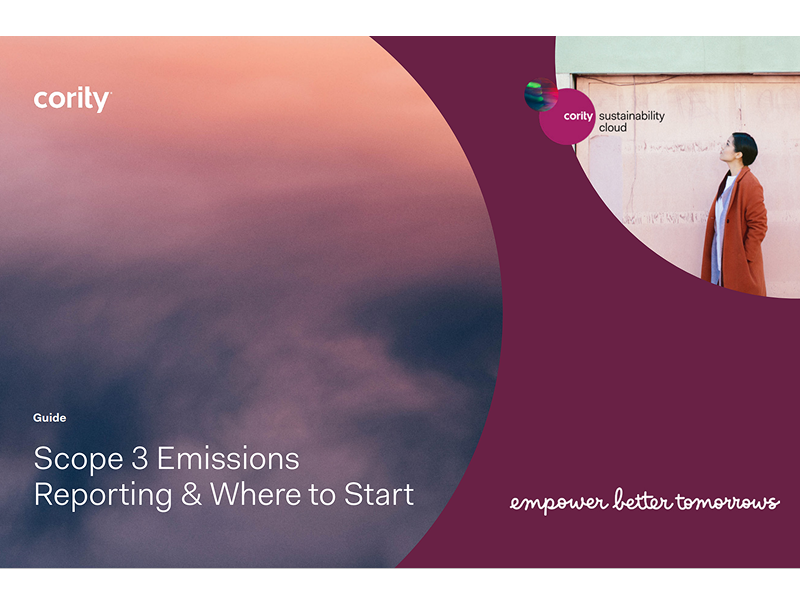Corporate chameleons: The evolution of the CSO
CSOs can adapt their approach, but that doesn't change their fundamental nature. Read More

- Over the past 20 years, the CSO role has evolved from being non-existent to having a seat at the table in many companies.
- Successful CSOs today are masters of resilience and can adapt to whatever the moment demands like chameleons.
- One critical step to becoming a successful CSO is being able to hold conflicting ideas at the same time.
The opinions expressed here by Trellis expert contributors are their own, not those of Trellis.
Ask anyone who’s been a CEO, CFO or any other variety of C-suite executive and they’ll tell you the roles today are very different from what they were 20 years ago. Different challenges demand different skills, experiences and aptitudes, and the role of chief sustainability officer is no exception. For one, in most companies the role didn’t exist 20 years ago, and in the past two decades it’s tumbled, twisted and catapulted to a seat at the table.
What started as a nice-to-have, feel-good role for many companies has now, in some cases, become a strategic pillar of their core business endeavors. And the position continues to evolve, shaped by mounting environmental pressures, shifting stakeholder expectations and an increasingly complex political and regulatory landscape.
Acting like chameleons
CSOs, at their core, are masters of resilience. In today’s geopolitical landscape defined by increasing volatility and uncertainty, they adapt to whatever the moment demands like chameleons. When the spotlight calls, they become compelling storytellers, championing their company’s vision. When discretion is needed, they work behind the scenes, quietly building coalitions and forging consensus.
Dave Stangis, a veteran CSO, offered a particularly insightful perspective in Weinreb Group’s 2025 CSO Report: “CSO leadership is like Aikido: It takes the right mix of art and science. Ten years ago, the CSO needed a 50/50 split to establish the position. These days, the demands of the role have shifted to more like 75 percent art and 25 percent science.”
John Davies, president of the Trellis Network, often speaks of the CSO role as chief translation officer, given different functions speak different “languages”: financial executives most often speak in terms of risk mitigation and return on investment, while operations leaders focus on efficiency gains and process improvements and human resources professionals consider talent attraction and retention.
The artful CSO learns to speak all these languages, crafting arguments that resonate with each audience while maintaining consistency in the underlying message. This requires not just analytical skills but emotional intelligence, cultural sensitivity and a deep understanding of organizational dynamics.
The most effective CSOs become organizational anthropologists, studying the formal and informal power structures within their companies to identify the most effective pathways for driving change. But there are easy tricks to get started on this path. For example, Microsoft’s Jim Hanna asks leaders two questions: “What keeps you up at night and what are you incentivized on?”
According to Weinreb Group’s 2025 CSO Report, CSO’s top key attributes are: corporate chameleon aligning with a diverse set of internal and external stakeholders; operating at both the big-picture and granular levels; and systems thinking.

Maintaining core identity
The chameleon analogy is particularly powerful because it highlights a crucial distinction: While a chameleon may change its color to suit the environment, it doesn’t change its fundamental nature. Similarly, the most effective CSOs and their teams maintain a consistent core identity and set of values while adapting their approach to different contexts and challenges. This balance between adaptability and authenticity is one of the most difficult aspects of sustainability leadership to master.
One critical step in this effort is to know thyself and which of the six corporate sustainability archetypes your company fits: Box checker; Risk reduction driven; Immediate returns driven; Brand and reputation driven; Purpose and impact driven or innovation driven.
Many CSOs went into their roles to drive societal impact and therefore skew towards purpose and impact as their default mode. This worked well when these programs were philanthropic and additive, but as they have become core to adding business value, this orientation can derail some. The CSO today has to be able to hold conflicting ideas in their head at the same time. A type of mental origami that is difficult to perfect.
Consider a story we once heard: Yvon Chouinard of Patagonia was challenged by his sales team on how they were to meet their ambitious sales targets when the company was promoting the limits of growth and anti-consumerism in its campaigns. He told them that holding that tension and finding ways to manage it was the job and walked away — leaving the team to find a way to achieve both. They did. Some version of this challenge is the one many CSOs face as ESG efforts become more business-integrated and aligned.
CSOs who understand the complexity of the moment, varying points of view, experiences and incentives, and mold themselves to their reality while staying true to their fundamental purpose will be best suited to deliver on the conviction that business can and must be a force for positive change in the world and do well in the process.
















